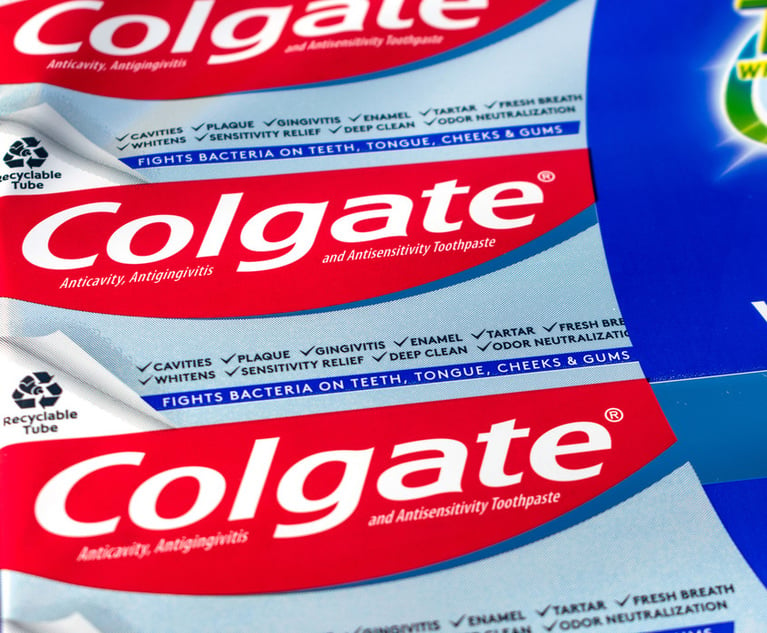Unlocking the Secret of California's Trade Secret Identification Requirement: Part 2
California trade secret law, through California Code of Civil Procedure §2019.210, presents a statutory framework unique among state and federal trade secret laws that requires trade secret plaintiffs to identify the misappropriated trade secrets before discovery commences. Part 1 of this article examines the genesis, purpose, and a leading case interpreting §2019.210. This part reviews two additional cases that interpret §2019.210 and discuss its applications.
October 18, 2019 at 12:00 PM
8 minute read
 Seth Sproul, left, and Tucker Terhufen, right, with Fish & Richardson.
Seth Sproul, left, and Tucker Terhufen, right, with Fish & Richardson.
In Part 1 of this article, we looked at the history of California Code of Civil Procedure §2019.210, the statutory framework unique among state and federal trade secret laws that requires trade secret plaintiffs to identify the misappropriated trade secrets before discovery commences. We also examined one of the three cases—Advanced Modular Sputtering—that provide some guidance on what is required in a trade secret identification. In Part 2, we look at the two other cases and the application of §2019.210.
Brescia v. Angelin. In Brescia v. Angelin (2009) 172 Cal. App. 4th 133, decided in 2009, the appellate court considered the sufficiency of a designation relating to a protein pudding. Plaintiff Brescia alleged that Sylvester Stallone and other defendants misappropriated Brescia's high protein, low carbohydrate pudding. Brescia first sought to identify the trade secret by referring to a large set of documents in his complaint. This was inadequate, and Brescia served a new trade secret statement in which Brescia grouped the alleged secrets into the categories of "Marketing Strategies," "Budget and Finance," "Formula," and "Manufacturing Process." Each category referred to attached documents (totaling 305 pages) that "specifically detailed each and every trade secret." The trial court again found the designation inadequate because "by citing to voluminous documents, it obscured rather than refined the description." The court objected to the Brescia's "surplusage" and to what it viewed as "essentially hiding the alleged trade secret in plain view by putting lots of clutter around it." Brescia served a new designation identifying 15 ingredients, their relative percentages, and the manufacturing process, including each step in the mixing, testing, and code marking of the pudding. at 141. Defendants challenged the sufficiency of the statement, arguing that Brescia had not distinguished his formula or manufacturing process from matters known to people in the commercial food science field, and the trial court agreed.
The appellate court overturned the trial court and found the third designation sufficient. The appellate court clarified that plaintiffs need not distinguish the alleged secret from prior art in every instance. In AMS, the technology was quite complex, and the court in that case found it useful to include additional explanation distinguishing its secrets from matters generally known, but that is not always required. Instead, the trade secret claimant must provide a level of detail adequate "to allow the defendant to investigate how it might differ from matters already known and to allow the court to craft relevant discovery." Section 2019.210 "does not create a procedural device to litigate the ultimate merits of the case—that is, to determine as a matter of law on the basis of evidence presented whether the trade secret actually exists." The court clarified, in dicta, that Brescia's earlier attempts to obfuscate by including generic descriptions, surplusage, and voluminous documents were improper. Ultimately, the appellate court concluded that Brescia had identified the recipe and manufacturing process with sufficient precision.
Perlan Therapeutics. In the third leading appellate case, Perlan Therapeutics. v. Superior Court (2009) 178 Cal. App. 4th 1333, the court addressed the reasonable particularity standard in the context of trade secrets of various drugs for treatment of the common cold and the flu. Perlan alleged that former employees took these trade secrets when they left to form a new pharmaceutical company. In its trade secret identification, Perlan included a page of text consisting of a "preliminary statement" and "general objections," similar to the "boilerplate reservation of right and objections often appearing in written discovery responses." The statement included four pages of text that repeated the allegations of the complaint or provided technical detail that was publicly available. Although the statement included what appeared to be technical detail about the alleged secret therapeutic treatments, it did not provide specific identification of the chemicals used in the processes described. The statement also referenced hundreds of pages from other documents. Finally, the statement included "all related research, development, advancements, improvements and processes related thereto, constituted trade secrets owned by Perlan."
Defendants moved for protective order, arguing that the statement failed to identify the actual trade secrets, only related information. In response, Perlan submitted multiple expert declarations that restated generally the format of the trade secret identification and concluded that the ideas were "novel" and the secrets were "identified with reasonable particularity." Perlan also argued that it did not have to "spell out specific details," and that providing too much detail would limit it at trial.
The appellate court found the designation insufficient, noting that "Perlan ha[d] the ability (but not the inclination) to provide clearer, more specific information." The Court contrasted the succinct and transparent identification found in Brescia with Perlan's purposely obtuse identification. The appellate court held that the trial court had discretion to require a more detailed disclosure. "So long as a trial court applies the correct legal standard and there is a basis in the record for its decision, appellate courts should not micromanage discovery." Because "Perlan did not identify its trade secrets with absolute precision (the 'recipe' or 'equations')[,] the court was not required to accept Perlan's submissions, as sufficient as a matter of law." The court clarified that requiring more particularity does not prejudice the plaintiff because it will generally be required to provide more detail through discovery responses as the case progresses.
Applying §2019.210
Application of these principles to litigation depends on the complexity and quantity of your trade secrets, the judge, and the tenacity of the defendant. Importantly, trial courts have broad discretion to decide whether a statement meets the reasonable particularity standard, and writ relief is "extraordinary." Thus, the trial court will likely have the final say on the sufficiency of the identification. The cases discussed above provide general principles to guide the trade secret identification process.
- Courts will assess the sufficiency of a trade secret identification under a rule of reason, i.e., "fair, proper, just and rational under all of the circumstances." The reasonableness will depend on the complexity of the technology or information at issue. More complex technologies will require "a more exacting level of particularity" and may require a plaintiff "to distinguish the alleged trade secrets from matters already known to persons skilled in the field."
- A trade secret identification must at least allow a defendant to investigate how the trade secret differs from that publicly known. Reference to documents will not satisfy the particularity requirement. Precise, transparent descriptions of the trade secrets may be sufficient as a matter of law.
- Plaintiffs should avoid vague descriptions and the use of surplusage language. Trial courts will be afforded discretion when assessing trade secret identifications as long as they create a record and apply the correct legal standard.
A plaintiff should not expect to simply point to large numbers of documents, or refer to broad, self-serving categories of information. On the other hand, a defendant should not think she will be able to force the plaintiff to identify the trade secret with pin-point accuracy or to distinguish the trade secret definitively from that which is publicly known, at least at this stage. Those issues will need to be litigated. Courts seem willing to use CCP §2019.210 as a lever to focus a case and discovery, and will not turn a pre-discovery disclosure requirement into a de facto summary judgment mechanism. Using the guidelines set forth in the Big Three appeals court decisions will allow plaintiffs and defendants to plan accordingly.
Seth Sproul, a principal with Fish & Richardson in San Diego and is a seasoned trial lawyer who has experience in all aspects of complex patent and intellectual property litigation, including trade secret disputes, copyright actions, and RICO claims. He has successfully handled trials in district courts across the country and in hearings before the International Trade Commission. Sproul can be reached at [email protected].
Tucker Terhufen is a litigation associate in Fish & Richardson's San Diego office. His practice focuses on patent litigation, trade secret litigation, as well as other forms of commercial litigation including breach of contract and RICO claims. Mr. Terhufen also has significant experience litigating in California state courts. He can be reached at [email protected].
This content has been archived. It is available through our partners, LexisNexis® and Bloomberg Law.
To view this content, please continue to their sites.
Not a Lexis Subscriber?
Subscribe Now
Not a Bloomberg Law Subscriber?
Subscribe Now
NOT FOR REPRINT
© 2025 ALM Global, LLC, All Rights Reserved. Request academic re-use from www.copyright.com. All other uses, submit a request to [email protected]. For more information visit Asset & Logo Licensing.
You Might Like
View All



Colgate Faces Class Actions Over ‘Deceptive Marketing’ of Children’s Toothpaste
Trending Stories
Who Got The Work
J. Brugh Lower of Gibbons has entered an appearance for industrial equipment supplier Devco Corporation in a pending trademark infringement lawsuit. The suit, accusing the defendant of selling knock-off Graco products, was filed Dec. 18 in New Jersey District Court by Rivkin Radler on behalf of Graco Inc. and Graco Minnesota. The case, assigned to U.S. District Judge Zahid N. Quraishi, is 3:24-cv-11294, Graco Inc. et al v. Devco Corporation.
Who Got The Work
Rebecca Maller-Stein and Kent A. Yalowitz of Arnold & Porter Kaye Scholer have entered their appearances for Hanaco Venture Capital and its executives, Lior Prosor and David Frankel, in a pending securities lawsuit. The action, filed on Dec. 24 in New York Southern District Court by Zell, Aron & Co. on behalf of Goldeneye Advisors, accuses the defendants of negligently and fraudulently managing the plaintiff's $1 million investment. The case, assigned to U.S. District Judge Vernon S. Broderick, is 1:24-cv-09918, Goldeneye Advisors, LLC v. Hanaco Venture Capital, Ltd. et al.
Who Got The Work
Attorneys from A&O Shearman has stepped in as defense counsel for Toronto-Dominion Bank and other defendants in a pending securities class action. The suit, filed Dec. 11 in New York Southern District Court by Bleichmar Fonti & Auld, accuses the defendants of concealing the bank's 'pervasive' deficiencies in regards to its compliance with the Bank Secrecy Act and the quality of its anti-money laundering controls. The case, assigned to U.S. District Judge Arun Subramanian, is 1:24-cv-09445, Gonzalez v. The Toronto-Dominion Bank et al.
Who Got The Work
Crown Castle International, a Pennsylvania company providing shared communications infrastructure, has turned to Luke D. Wolf of Gordon Rees Scully Mansukhani to fend off a pending breach-of-contract lawsuit. The court action, filed Nov. 25 in Michigan Eastern District Court by Hooper Hathaway PC on behalf of The Town Residences LLC, accuses Crown Castle of failing to transfer approximately $30,000 in utility payments from T-Mobile in breach of a roof-top lease and assignment agreement. The case, assigned to U.S. District Judge Susan K. Declercq, is 2:24-cv-13131, The Town Residences LLC v. T-Mobile US, Inc. et al.
Who Got The Work
Wilfred P. Coronato and Daniel M. Schwartz of McCarter & English have stepped in as defense counsel to Electrolux Home Products Inc. in a pending product liability lawsuit. The court action, filed Nov. 26 in New York Eastern District Court by Poulos Lopiccolo PC and Nagel Rice LLP on behalf of David Stern, alleges that the defendant's refrigerators’ drawers and shelving repeatedly break and fall apart within months after purchase. The case, assigned to U.S. District Judge Joan M. Azrack, is 2:24-cv-08204, Stern v. Electrolux Home Products, Inc.
Featured Firms
Law Offices of Gary Martin Hays & Associates, P.C.
(470) 294-1674
Law Offices of Mark E. Salomone
(857) 444-6468
Smith & Hassler
(713) 739-1250






